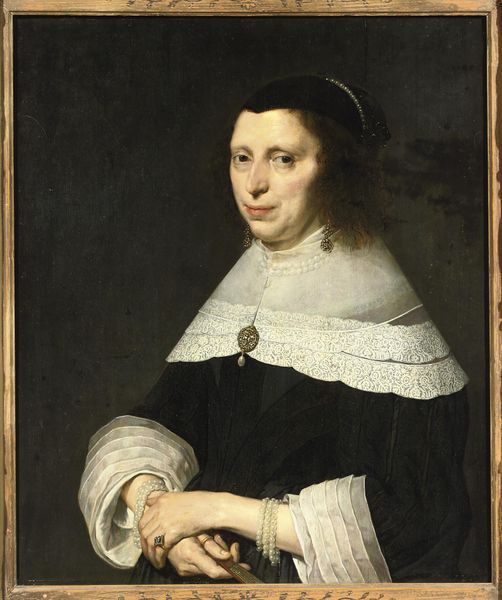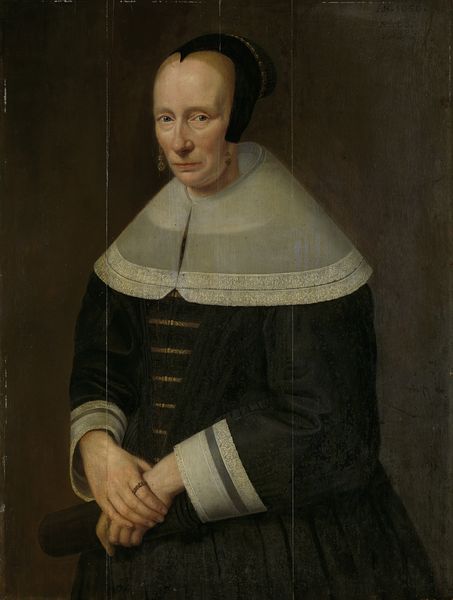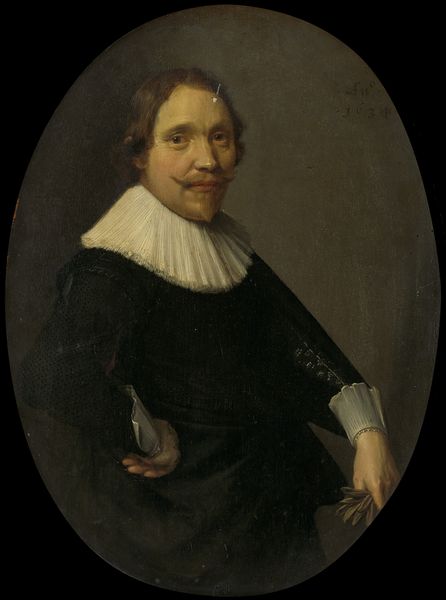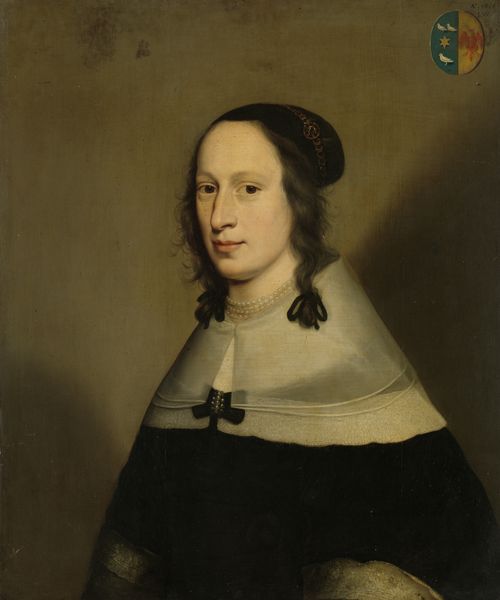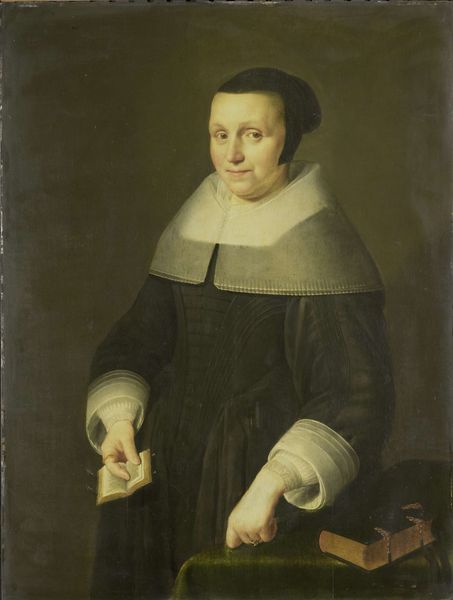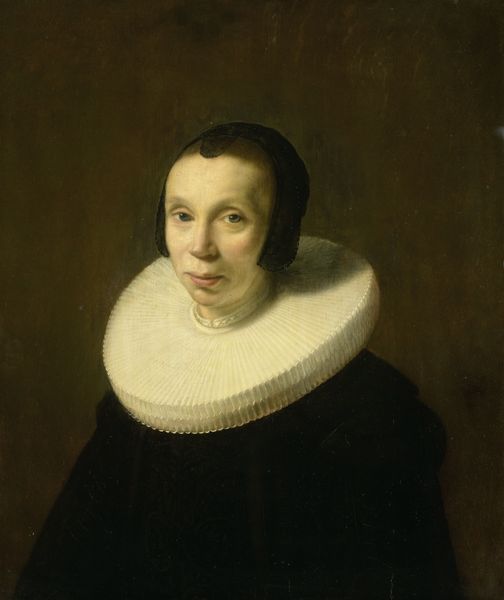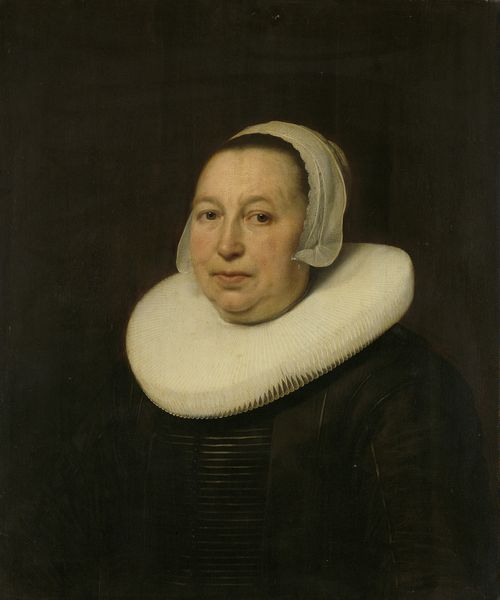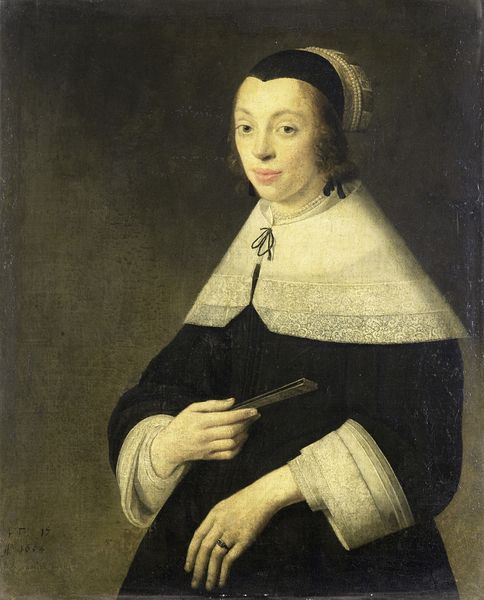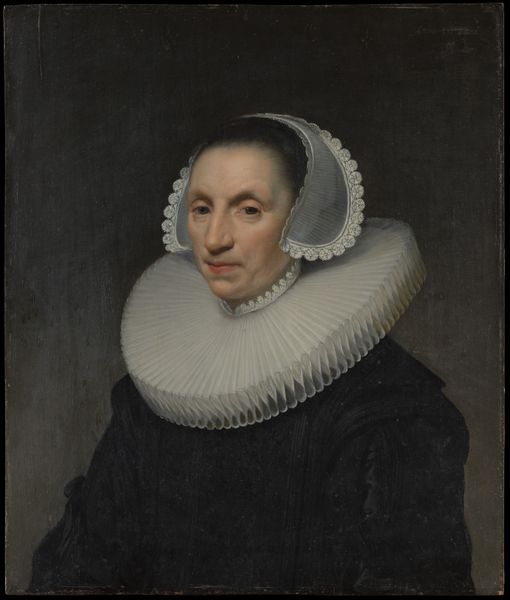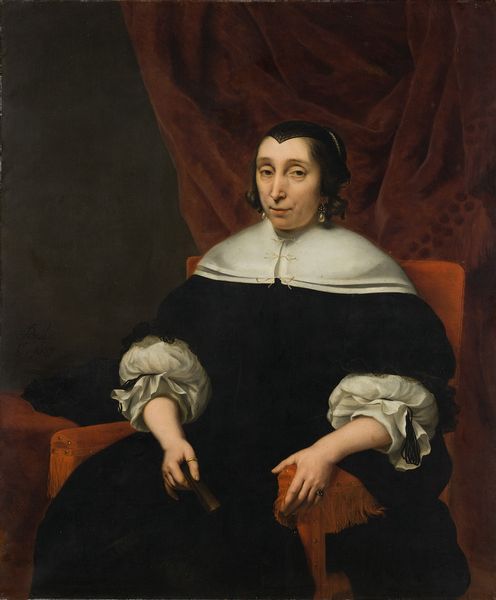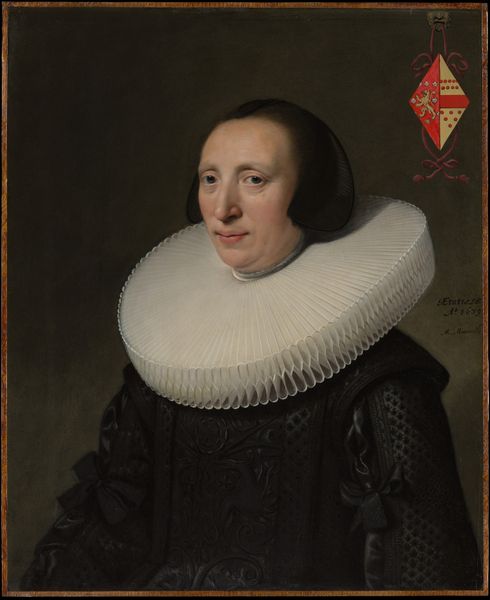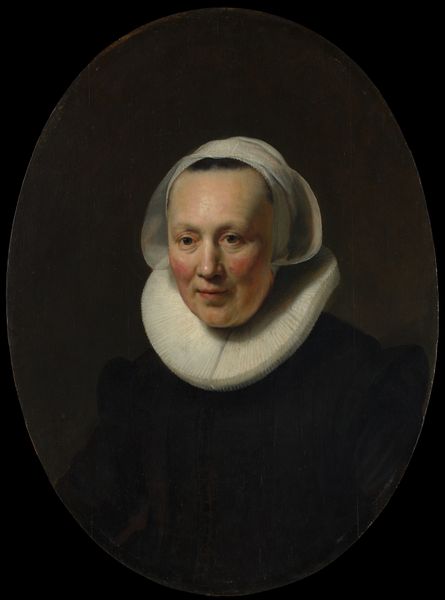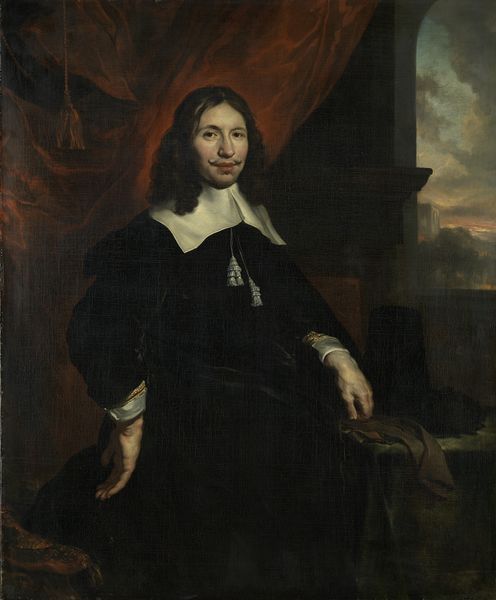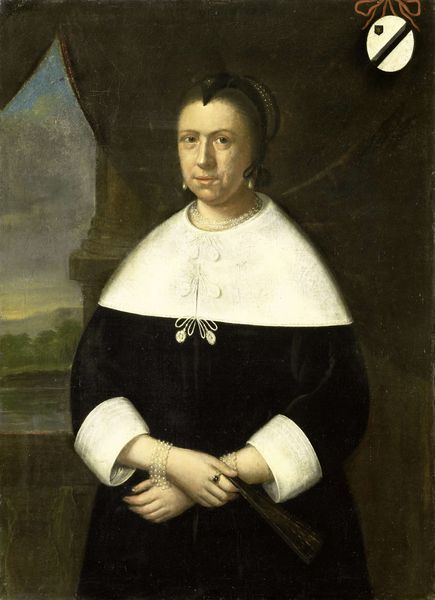
painting, oil-paint
#
portrait
#
baroque
#
portrait
#
painting
#
oil-paint
#
realism
Dimensions: support height 81.5 cm, support width 66.5 cm, outer size depth 8 cm
Copyright: Rijks Museum: Open Domain
Editor: Here we have Jan van Bijlert’s “Portrait of a Woman,” made around 1650 using oil paint. There's a stillness and formality to the composition that's really striking. What do you see in this piece? Curator: What I find compelling is the quiet dignity the artist gives the sitter. She’s not adorned with jewels or extravagant fabrics, yet she projects authority. This invites us to think about the role of women in 17th century Dutch society. Her attire, though simple, suggests a certain social standing, possibly within a religious community. Editor: A religious community? I hadn't considered that. Curator: Notice the dark, modest clothing and the plain linen collar. These elements signal a departure from ostentatious displays of wealth that were becoming common. This woman might have positioned herself—or been positioned—as resisting those trends, consciously aligning with more modest values. What does this portrait tell us about gender? What are the prevailing attitudes towards women at the time? Editor: It’s interesting how her gaze seems both direct and reserved. The plainness of the clothing is deceiving, almost like a deliberate choice. The ring she's wearing also stands out. Curator: Precisely! The ring subtly suggests commitment, while her posture and attire reflect a conscious presentation of self. Her social positioning actively goes against social expectations and expectations, or perhaps engages them in very calculated ways. It invites a nuanced reading of gender and class dynamics within that historical moment. How does situating Bijlert's work in broader cultural discourses change the way we perceive this 'simple' portrait? Editor: I’m starting to see this portrait not just as an image of a woman, but as a complex statement about identity and social position in the 17th century. Thank you! Curator: Exactly! It reminds us that art is always in dialogue with its historical and cultural contexts. I learned something as well!
Comments
No comments
Be the first to comment and join the conversation on the ultimate creative platform.
